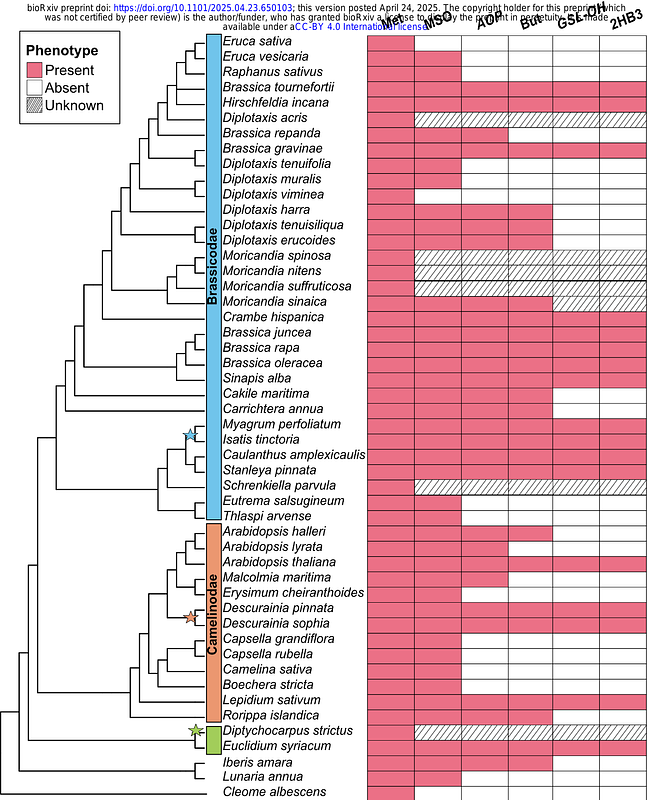Convergence and constraint in glucosinolate evolution across the Brassicaceae

Convergence and constraint in glucosinolate evolution across the Brassicaceae
Agosto Ramos, A.; Bird, K.; Jain, A.; Okegbe, O.; Holland, L.; Kliebenstein, D. J.
AbstractDiversity in plant specialized metabolites plays critical roles in plant-environment interactions. In longer evolutionary scales, e.g. between families or orders, this diversity arises from whole-genome and tandem duplication events. Less is known about the evolutionary patterns shaping chemical diversity at shorter scales, e.g. within a family. Utilizing the aliphatic glucosinolate pathway we explored how the terminal structural modification enzyme GSL-OH evolved across the Brassicaceae and the genomic processes that control presence-absence variation of its products (R)-2-hydroxy-but-3-enyl and (S)-2-hydroxy-but-3-enyl. We implemented a phylo-functional approach where we functionally validated GSL-OH orthologs across the Brassicaceae and used that information to map the genomic origin and trajectory of the loci. This uncovered a complex mechanism involving at least three ancestral loci with extensive gene loss across all species creating unequal retention across the phylogenetic relationships. Convergent evolution in enantiomeric specificity was observed where several independent species had tandem duplicates diverged towards producing the R or S enantiomers. To explore potential biological differences between the enantiomers, we performed Trichoplusia ni insect assays and Botrytis cinerea detached leaf assays. We found that plants with the S enantiomer were more susceptible to B. cinerea infection while plants with the R enantiomer seemed more susceptible to T. ni herbivory. This variation in activity between the precursor and different enantiomeric products may shape the recurrent evolution of their production.